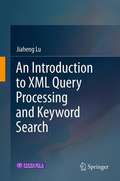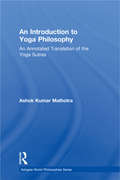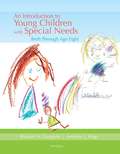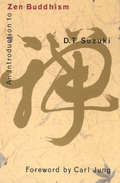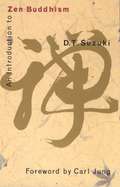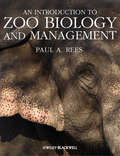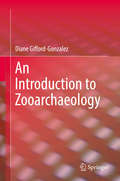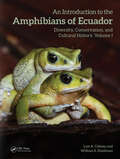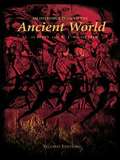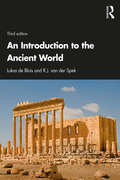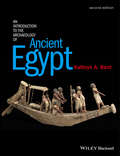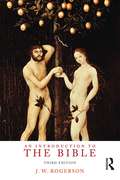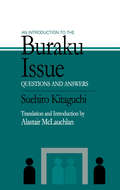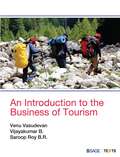- Table View
- List View
An Introduction to XML Query Processing and Keyword Search
by Jiaheng Lu"An Introduction to XML Query Processing and Keyword Search" systematically and comprehensively covers the latest advances in XML data searching. It presents an extensive overview of the current query processing and keyword search techniques on XML data, including XML labeling schemes, indexing, processing on order and un-order XML tree patterns, XML query optimization, results estimation, and XML keyword searches, which are elaborated in separate chapters. Graduate students and researchers in the field of XML data searching will find this book an invaluable resource. Prof. Jiaheng Lu is an associate professor at Renmin University of China's School of Information.
An Introduction to Yoga
by Annie BesantThe whole evolution is one in its essence. The succession is the same, the sequences identical. <P> <P> Whether you are thinking of the unfolding of consciousness in the universe, or in the human race, or in the individual, you can study the laws of the whole, and in Yoga you learn to apply those same laws to your own consciousness rationally and definitely. All the laws are one, however different in their stage of manifestation. If you look at Yoga in this light, then this Yoga. . .
An Introduction to Yoga Philosophy: An Annotated Translation of the Yoga Sutras (Ashgate World Philosophies Series)
by Ashok Kumar MalhotraWith its promise of personal improvement, physical well-being and spiritual enrichment, yoga is enjoying a resurgence in popularity at the turn of the third millennium. To unravel the mystery of the discipline, its philosophies and relevance in contemporary life, the original text of the Yoga Sutras of Patanjali must be explored. This book offers the first accessible translation and commentary on Patanjali's Yoga Sutras. An introductory section examines the multidimensional aspects of yoga as philosophy, psychology, science, and religion, as well as exploring popular versions of yoga in the West. The core of the book offers a new translation of the entire text of the Yoga Sutras, in a language that is clear and comprehensible to students. Commentaries are presented to highlight the meaning of various statements (sutras) and key themes are outlined via sectional summaries. A full glossary of key words and names is also provided. Concluding chapters look at yoga in contemporary life, revealing the popularity of yoga in the 21st century through Star Wars, and exploring yoga's connection to health and science, contrasting yoga's holistic view of healing with that of the limited view of present day medical science. Sample physical, breathing and meditation exercises are provided. An Introduction to Yoga Philosophy offers a comprehensive introduction to the Yoga Sutras text of Patanjali to all students and interested readers of Indian philosophy and religion, world religions, east-west psychology, and mysticism.
An Introduction to Young Children With Delays and Disabilities: Birth Through Age Eight
by Richard M. Gargiulo Jennifer L. KilgoAn Introduction to Young Children With Delays and Disabilities: Birth Through Age Eight introduces readers to educational policies, services, and practices for future educators serving young children birth through age eight with delays and disabilities in early intervention/early childhood special education (EI/ECSE). Thoughtfully and comprehensively addressing the needs of young children and their families, authors Richard M. Gargiulo and Jennifer L. Kilgo offer interventions and instructional techniques that provide students with a broad understanding of important theoretical and philosophical foundations, including evidence-based decision making, cultural and linguistic responsiveness, and appropriate instruction and interventions in classroom settings and beyond. The Sixth Edition has been thoroughly updated to incorporate the Initial Practice-Based Professional Preparation Standards for Early Interventionists/Early Childhood Special Educators developed by the Division for Early Childhood (DEC) and Council for Exceptional Children (CEC) in 2020, as well as the DEC Recommended Practices.
An Introduction to Young Children With Delays and Disabilities: Birth Through Age Eight
by Richard M. Gargiulo Jennifer L. KilgoAn Introduction to Young Children With Delays and Disabilities: Birth Through Age Eight introduces readers to educational policies, services, and practices for future educators serving young children birth through age eight with delays and disabilities in early intervention/early childhood special education (EI/ECSE). Thoughtfully and comprehensively addressing the needs of young children and their families, authors Richard M. Gargiulo and Jennifer L. Kilgo offer interventions and instructional techniques that provide students with a broad understanding of important theoretical and philosophical foundations, including evidence-based decision making, cultural and linguistic responsiveness, and appropriate instruction and interventions in classroom settings and beyond. The Sixth Edition has been thoroughly updated to incorporate the Initial Practice-Based Professional Preparation Standards for Early Interventionists/Early Childhood Special Educators developed by the Division for Early Childhood (DEC) and Council for Exceptional Children (CEC) in 2020, as well as the DEC Recommended Practices.
An Introduction to Young Children With Special Needs: Birth Through Age Eight (Education Ser.)
by Richard M. Gargiulo Dr Jennifer L. KilgoAn Introduction to Young Children with Special Needs: Birth Through Age Eight is a comprehensive introduction to educational policies, programs, practices, and services for future practitioners serving young children with delays or disabilities in early intervention-early childhood special education (EI-ECSE). Thoughtfully addressing the needs of children at risk for learning or development delays or disabilities, revered authors Richard M. Gargiulo and Jennifer L. Kilgo offer evidence-based interventions and instructional techniques that provide students with a broad understanding of important theoretical and philosophical foundations, including evidence-based decision making, developmentally appropriate practices, cultural responsiveness, and activity-based intervention.
An Introduction to Young Children With Special Needs: Birth Through Age Eight (Education Ser.)
by Richard M. Gargiulo Dr Jennifer L. KilgoAn Introduction to Young Children with Special Needs: Birth Through Age Eight is a comprehensive introduction to educational policies, programs, practices, and services for future practitioners serving young children with delays or disabilities in early intervention-early childhood special education (EI-ECSE). Thoughtfully addressing the needs of children at risk for learning or development delays or disabilities, revered authors Richard M. Gargiulo and Jennifer L. Kilgo offer evidence-based interventions and instructional techniques that provide students with a broad understanding of important theoretical and philosophical foundations, including evidence-based decision making, developmentally appropriate practices, cultural responsiveness, and activity-based intervention.
An Introduction to Young Children with Special Needs Birth Through Age Eight
by Richard M. Gargiulo Jennifer L. KilgoAN INTRODUCTION TO YOUNG CHILDREN WITH SPECIAL NEEDS offers a thorough introduction to the educational policies, programs, practices, and services specific to infants, toddlers, and preschoolers who demonstrate delays and disabilities. It also offers information about youngsters who exhibit signs of being at-risk for future programs in learning and development. Through a host of proven learning techniques, a website, and additional related resources, readers are guided to a full understanding of important theoretical and philosophical foundations in serving children whose learning is delayed. These include authentic assessments, cultural sensitivity and competence, activity-based interventions, and developmentally and individually appropriate practices. The book emphasizes instructional strategies necessary for creating inclusive learning environments, and offers recommendations throughout for using technology in the learning environment.
An Introduction to Zen Buddhism
by D. T. Suzuki Carl JungOne of the world’s leading authorities on Zen Buddhism, D. T. Suzuki was the author of more than a hundred works on the subject in both Japanese and English, and was most instrumental in bringing the teachings of Zen Buddhism to the attention of the Western world. Written in a lively, accessible, and straightforward manner, An Introduction to Zen Buddhism is illuminating for the serious student and layperson alike. Suzuki provides a complete vision of Zen, which emphasizes self-understanding and enlightenment through many systems of philosophy, psychology, and ethics. With a foreword by the renowned psychiatrist Dr. Carl Jung, this volume has been generally acknowledged a classic introduction to the subject for many years. It provides, along with Suzuki’s Essays and Manual of Zen Buddhism, a framework for living a balanced and fulfilled existence through Zen.
An Introduction to Zen Buddhism
by D. T. SuzukiThis book provides a complete vision of Zen, which emphasizes self-understanding and enlightenment through many systems of philosophy, psychology, and ethics.
An Introduction to Zoo Biology and Management
by Paul A. ReesThis book is intended as an introductory text for students studying a wide range of courses concerned with animal management, zoo biology and wildlife conservation, and should also be useful to zookeepers and other zoo professionals. It is divided into three parts. Part 1 considers the function of zoos, their history, how zoos are managed, ethics, zoo legislation and wildlife conservation law. Part 2 discusses the design of zoos and zoo exhibits, animal nutrition, reproduction, animal behaviour (including enrichment and training), animal welfare, veterinary care, animal handling and transportation. Finally, Part 3 discusses captive breeding programmes, genetics, population biology, record keeping, and the educational role of zoos, including a consideration of visitor behaviour. It concludes with a discussion of the role of zoos in the conservation of species in the wild and in species reintroductions. This book takes an international perspective and includes a wide range of examples of the operation of zoos and breeding programmes particularly in the UK, Europe, North America and Australasia. Visit www.wiley.com/go/rees/zoo to access the artwork from the book.
An Introduction to Zooarchaeology
by Diane Gifford-GonzalezThis volume is a comprehensive, critical introduction to vertebrate zooarchaeology, the field that explores the history of human relations with animals from the Pliocene to the Industrial Revolution. The book is organized into five sections, each with an introduction, that leads the reader systematically through this swiftly expanding field. Section One presents a general introduction to zooarchaeology, key definitions, and an historical survey of the emergence of zooarchaeology in the Americas, Europe, Asia, and Africa, and introduces the conceptual approach taken in the book. This volume is designed to allow readers to integrate data from the book along with that acquired elsewhere within a coherent analytical framework. Most of its chapters take the form of critical “review articles,” providing a portal into both the classic and current literature and contextualizing these with original commentary. Summaries of findings are enhanced by profuse illustrations by the author and others.
An Introduction to the Amphibians of Ecuador: Diversity, Conservation, and Cultural History
by William E. Duellman Luis A. ColomaAn Introduction to the Amphibians of Ecuador is the first of four volumes, which are comprehensive, well-illustrated, and authoritative works, making them invaluable to biologists, conservationists, and others. This initial volume delves into the cultural history of amphibians, encompassing ethnobatrachology and folklore, while summarizing the amphibian iconography found in Ecuadorian archaeology. Moreover, it covers topics such as bioprospecting, sustainable management, and biotrade activities. The history and present state of amphibian biology research are also addressed. Furthermore, it explores in comprehensive detail the rich amphibian diversity of Ecuador, providing a thorough review of biogeography, amphibian declines, and conservation.Subsequent volumes list the characteristics of each species, define each taxon, and compare them to similar other species. Natural history and reproductive behavior, where known, are described, as are data on vocalizations, larvae, and ontogenetic changes. Amphibian distributions are illustrated with physiographic maps with dots. Each volume addresses the declines, extinctions, and conservation status of each species and provides notations of their occurrence in reserves.KEY FEATURES Summarizes the ethnozoological aspects of amphibians Provides a thorough history of research Introduction to three volumes providing accounts for each of the 3 orders, 19 families, 78 genera, and over 650 species from Ecuador
An Introduction to the Ancient World
by Lukas De Blois R.J. van der Spek L De Blois R. J. van der SpekIntegrating the results of scholarly work from the past decade, the authors of An Introduction to the Ancient World, Lukas de Blois and R.J. van der Spek, have fully-updated and revised all sixteen chapters of this best-selling introductory textbook. Covering the history and culture of the ancient Near East, Greece and Rome within the framework of a short narrative history of events, this book offers an easily readable, integrated overview for students of history, classics, archaeology and philosophy, whether at college, at undergraduate level or among the wider reading public. This revised second edition offers a new section on early Christianity and more specific information on the religions, economies, and societies of the ancient Near East. There is extended coverage of Greek, Macedonian and Near Eastern history of the fourth to second centuries BC and the history of the Late Roman Republic. The consequences of Julius Caesar's violent death are covered in more detail, as are the history and society of Imperial Rome. This new edition is: comprehensive: covers 3,000 years of ancient history and provides the basis for a typical one-semester course lavishly illustrated: contains maps, line drawings and plates to support and supplement the text, with updated captions clearly and concisely written: two established and respected university teachers with thirty years' experience in the subject areas well-organized: traces the broad outline of political history but also concentrates on particular topics user-friendly: includes chapter menus, an extensive and expanded bibliography organized by subject area and three appendices, an improved introduction and the addition of an epilogue.
An Introduction to the Ancient World
by Lukas de Blois R.J. van der SpekAn Introduction to the Ancient World offers a thorough survey of the history of the ancient Near East, Greece and Rome. Covering the social, political, economic and cultural processes that have influenced later western and Near Eastern civilisations, this volume considers subjects such as the administrative structures, economies and religions of the ancient Near East, Athenian democracy, the development of classical Greek literature, the interaction of cultures in the Hellenistic world, the political and administrative system of the Roman Republic and empire, and the coming of Christianity, all within the broad outline of political history. This third edition is thoroughly updated and some chapters are completely rewritten to cover recent historical research. Changes include: more attention to economic structures and developments, and to the history of the later Roman Empire (third to sixth centuries AD); incorporation of the results of recent archaeological and historical research, and recently published studies of ancient literature; ‘boxes’ that support the main text, on topics including economic and political systems, religion and terminology; redrawn maps and new, higher-quality images; the inclusion of useful websites in the bibliography. An Introduction to the Ancient World provides an easily readable, user-friendly, integrated overview for students of ancient history, classics and archaeology. Lavishly illustrated, clearly and concisely written, and well organised, this fully updated and revised edition will remain a key resource for students beginning to investigate the civilisations of the ancient Mediterranean.
An Introduction to the Archaeology of Ancient Egypt
by Kathryn A. BardThis student-friendly introduction to the archaeology of ancient Egypt guides readers from the Paleolithic to the Greco-Roman periods, and has now been updated to include recent discoveries and new illustrations. • Superbly illustrated with photographs, maps, and site plans, with additional illustrations in this new edition • Organized into 11 chapters, covering: the history of Egyptology and Egyptian archaeology; prehistoric and pharaonic chronology and the ancient Egyptian language; geography, resources, and environment; and seven chapters organized chronologically and devoted to specific archaeological sites and evidence • Includes sections on salient topics such as the constructing the Great Pyramid at Giza and the process of mummification
An Introduction to the Bible
by J. W. RogersonA casual reader enters a bookshop looking for a Bible. However, not all the Bibles on display have the same contents! Some have more books than others, some are study editions, some use gender-free language. How did this come about? This Introduction works back through the processes by which the Bible was written, transmitted, copied and declared to be authoritative by various churches. The following topics are dealt with: What is the Bible?; How Biblical Writers Wrote; The Making of the Old Testament; The Making of the Apocrypha; The Making of the New Testament; The Canon of the Bible; The Study of the Bible; The Use of the Bible in Social, Moral and Political Questions. This updated edition takes account of developments in scholarship since the book was first published in 1999 by Penguin. The original edition has been translated into Spanish and Portuguese.
An Introduction to the Bible
by Patrick Hartin Robert A. KuglerMany current Bible “intro” volumes focus more on theories about the biblical text than on the text itself. They lack the simplicity that has become increasingly crucial as basic biblical literacy has declined. Robert Kugler and Patrick Hartin seek to remedy that problem by turning readers back to the text at hand. Their Introduction to the Bible surveys the content of all the biblical books, section by section, focusing on the Bible’s theological themes.
An Introduction to the Biology of Vision
by James T. McilwainThis textbook is intended for use in a course for undergraduate students in biology, neuroscience or psychology who have had an introductory course on the structure and function of the nervous system. Its primary purpose is to provide a working vocabulary and knowledge of the biology of vision and to acquaint students with the major themes in biological vision research. Part I treats the eye as an image-forming organ and provides an overview of the projections from the retina to key visual structures of the brain. Part II examines the functions of the retina and its central projections in greater detail, building on the introductory material of Part I. Part III treats certain special topics in vision that require this detailed knowledge of the structure and properties of the retina and visual projections.
An Introduction to the Blue Humanities
by Steve MentzAn Introduction to the Blue Humanities is the first textbook to explore the many ways humans engage with water, utilizing literary, cultural, historical, and theoretical connections and ecologies to introduce students to the history and theory of water-centric thinking. Comprised of multinational texts and materials, each chapter will provide readers with a range of primary and secondary sources, offering a fresh look at the major oceanic regions, saltwater and freshwater geographies, and the physical properties of water that characterize the Blue Humanities. Each chapter engages with carefully chosen primary texts, including frequently taught works such as Herman Melville’s Moby-Dick, Samuel Taylor Coleridge’s “Rime of the Ancient Mariner,” Homer’s Odyssey, and Luis Vaz de Camões’s Lusíads, to provide the perfect pedagogy for students to develop an understanding of the Blue Humanities chapter by chapter. Readers will gain insight into new trends in intellectual culture and the enduring history of humans thinking with and about water, ranging across the many coastlines of the World Ocean to Pacific clouds, Mediterranean lakes, Caribbean swamps, Arctic glaciers, Southern Ocean rainstorms, Atlantic groundwater, and Indian Ocean rivers. Providing new avenues for future thinking and investigation of the Blue Humanities, this volume will be ideal for both undergraduate and graduate courses engaging with the environmental humanities and oceanic literature.
An Introduction to the Bootstrap (ISSN #57)
by Bradley Efron R.J. TibshiraniAn Introduction to the Bootstrap arms scientists and engineers as well as statisticians with the computational techniques they need to analyze and understand complicated data sets. The bootstrap is a computer-based method of statistical inference that answers statistical questions without formulas and gives a direct appreciation of variance, bias, coverage, and other probabilistic phenomena. This book presents an overview of the bootstrap and related methods for assessing statistical accuracy, concentrating on the ideas rather than their mathematical justification. Not just for beginners, the presentation starts off slowly, but builds in both scope and depth to ideas that are quite sophisticated.
An Introduction to the Buraku Issue: Questions and Answers
by Suehiro Kitaguchi Alastair McLauchlanTranslated with an Intoduction by Alastair McLaughlin. The extent of discrimination against the Buraku communities is one of the most sensitive issues facing the Japanese government and the social coherence of contemporary Japan.
An Introduction to the Business of Tourism
by Venu Vasudevan B. VijayakumarThis textbook offers a lucid understanding of the business of tourism and helps students gain professional and entrepreneurial insights. An outcome of years of experience and practice, An Introduction to the Business of Tourism offers a fresh perspective of the skill-oriented, knowledge-based and multi-disciplinary arena of the tourism business. It presents a balanced mix of the basic principles and concepts, their application and policy implications as well as the business realities and operational aspects of the tourism industry. Divided into four sections and spread across nineteen chapters, this textbook delves deep into Indian and international tourism experiences with numerous integrated case studies and examples. Key Features: Special emphasis on recent business aspects of tourism from local and global perspectives Over 45 case studies to provide valuable insights into current business trends to strengthen the practical knowledge of students Each chapter has review questions and activities to support self-assessment. Book-end glossary of major concepts and terminologies to facilitate quick scan and easy understanding
An Introduction to the Calculus of Variations
by L. A. ParsThis clear, rigorous introduction to the calculus of variations covers applications to geometry, dynamics, and physics. Focusing upon problems with one independent variable, the text connects the abstract theory to its use in concrete problems. It offers a working knowledge of relevant techniques, plus an impetus for further study.Starting with an overview of fundamental problems and theories, the text advances to illustrative examples and examinations of variable end-points and the fundamental sufficiency theorem. Subsequent chapters explore the isoperimetrical problem, curves in space, the problem of Lagrange, and the parametric problem. The final chapter is devoted to multiple integrals, with a particular focus on Dirichlet's principle. Suitable for advanced undergraduate and graduate students, this text requires a background in mathematical analysis.
An Introduction to the Celtic Languages (Longman Linguistics Library)
by Paul RussellThis text provides a single-volume, single-author general introduction to the Celtic languages.The first half of the book considers the historical background of the language group as a whole. There follows a discussion of the two main sub-groups of Celtic, Goidelic (comprising Irish, Scottish, Gaelic and Manx) and Brittonic (Welsh, Cornish and Breton) together with a detailed survey of one representative from each group, Irish and Welsh.The second half considers a range of linguistic features which are often regarded as characteristic of Celtic: spelling systems, mutations, verbal nouns and word order.
